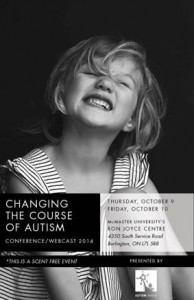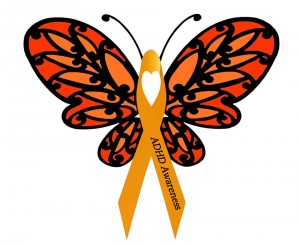
Dr. Sonya Doherty
Welcome to our latest guest post from Dr. Sonya Doherty. You can read the original post on her blog here. Dr. Sonya Doherty is a licensed and board certified Naturopathic Doctor who is an active member of the CAND. Sonya Doherty completed her undergraduate training at the University of Western Ontario in a Bachelor of Science Honors Kinesiology program.
She writes “How’s that for a blog title?????
Children diagnosed with autism and ADHD have tremendous difficulty with motor planning. New areas of research are showing that motor planning problems can be prevented, treated and reversed. So, what does that mean for your child? Better communication, less sensory issues (which means more social interaction), openness to new foods, improved eye contact, restored focus and attention, better coordination, enhanced fine motor and gross motor skills….
Are you with me? Are you ready to immerse yourself in a little cellular physiology so I can introduce you to a wonderful researcher who has helped in the recovery of thousands of children by improving their motor planning?
Okay, let’s get started. You may be asking, what the heck is motor planning and how does it impact my child?
Motor planning is the steps the brain puts in place to allow the body to move. Many neuroscientists believe the reason we have a brain is to produce adaptable and complex movement. Every way we affect the world relies on contraction of muscles. Speaking, walking, focusing, eye contact and even having a bowel movement! Another important piece of information about movement is that contraction of muscles requires a plan. That plan is formulated by the brain relying on both experience and sensory input. In the case of autism, sensory processing is impaired and the overwhelming sensory stimuli reduce the brain’s effectiveness when creating a motor plan. I believe this is what drives many repetitive behaviours. Repetition is very important to motor planning. Without the ability to rely on sensory input, children with autism “bank” their experiences. They attempt to memorize enough information as possible to compensate for the sensory overload, with the goal of stabilizing motor planning.
Problems with motor planning are not the lack of desire or ability to move, they are caused by inconsistent instructions from the brain. Imagine that you want to blow a bubble. If the parts of your brain that control motor planning are intact, your mouth will receive a succinct plan to coordinate the muscles of your mouth to get in the right position and then contract synergistically to create the movement needed to blow a bubble. If your child’s motor planning systems are not strong or have been damaged, blowing a bubble or sucking from a straw can be extremely difficult. Because the instructions from the brain are inconsistent, some skills can be strong and others more difficult. You may also find that one day your child can perform a motor movement and the next day it is very difficult for them. As in saying words or making eye contact.
As many of you know, two and a half years ago our youngest son regressed after his first surgery to repair a severe birth defect. A birth defect that is linked to mounting toxicity in our environment and, like autism, ADHD, speech delay and other developmental issues, is on the rise. There were many researchers and medical practitioners who have helped us in our pursuit to recover as many skills as possible for our son. Dr. Claudia Morris, who will be presenting at Autism Canada’s upcoming conference, developed a motor planning therapy that helped her own son using omega 3 and omega 6 fatty acids in addition to therapeutic doses of vitamin E. These nutritional treatments address toxic damage to the cells, including cell membranes and the energy producing mitochondria. Despite over two years of biomedical treatment, we are still not 100% sure what caused the regression for our son. What I am sure of is that the combination of anesthetics, antibiotics, Tylenol and morphine he was given changed the way his cells were functioning.
Cells are like any living organism, they are designed to communicate with each other. Disruption in this communication impacts the signals that go back and forth. A significant toxic insult will cause the cells to all start “screaming” at each other. Chronic toxic exposure over time will have the same result. Alert signals will escalate and in the end, in an effort to protect themselves, the cells stop communicating in some ways so they aren’t overwhelmed by the alert signals coming in from their neighbours. As an isolated entity, the cell is much less effective. Things slow down. The brain has trouble communicating clear instructions to the muscles, disrupting motor planning. Motor planning becomes very difficult without smooth cellular communication. A recent study used a century old drug to improve cell signalling in an animal model of autism. The results was nothing short of incredible. The drug reversed all autism symptoms for a few weeks by blocking “danger” signals thought to come from damaged mitochondria.
Dr. Morris has shown, that motor planning can be improved by repairing cells, and restoring cellular communication. You see, one of the thousands of children Dr. Claudia Morris has helped is my own. Her research and brave foray into nutritional therapies for motor planning is the treatment approach that helped reconnect our son’s mouth to his brain, allowing him to chew, swallow and speak. Two and half years ago, Magnus would gag at most foods, choke on many others, couldn’t suck on a straw or blow. He certainly couldn’t coordinate his articulation muscles to speak. The words he had weren’t clear and he could use only one word at a time and with great effort. Repairing his cell membranes and supporting mitochondrial function with Dr. Morris’s program has allowed cellular communication to return. Once his cells were again communicating, we were able to see progress through introducing new foods and textures. His speech pathologists were able to expertly advise us on the fastest way to get his muscles caught up by strengthening them and training the motor planning centers to be able to perform better. Today, Magnus can eat anything and is beginning to speak in sentences as long as 7 words. In practice, I have seen the same results time and time again. If a child has motor planning problems, improving the cell’s use of essential fatty acids and repairing the cell membrane consistently results in improvements that are life changing.
We know that many toxins can damage the body on a cellular level. There are too many to list here but one that I feel is really important to mention is Tylenol. Tylenol is toxic to cells because it depletes glutathione, which is the body’s most important antioxidant. Antioxidants protect cells, so the depletion of glutathione by Tylenol is one way cells get damaged. Women who take Tylenol in pregnancy are more likely to have a child diagnosed with ADHD. Tylenol has also been linked to asthma. Dr. William Shaw wrote a ground breaking paper that identifies Tylenol as one of the major causes of autism, ADHD and asthma.
We also know that genes can be damaged by toxins and that damaged genes are passed along to the next generation. Epigenetic damage to some genes directly weakens cell function. The microbiome, the ecosystem in the gut, also plays a crucial role in protect cells from toxicity. Our gut is the most important detoxification organ. Diarrhea and constipation increase risk of toxicity because heavy metals, pesticides, PCBs and even breakdown products of microbes are removed when we have a bowel movement. Overgrowth of certain microbes can damage cell membranes. Research by Dr. Derrick MacFabe has shown in an animal model, overgrowth of the species clostridia, will deplete carnitine. Carnitine is a shuttle that fuels the energy producing mitochondria with much needed essential fatty acids. Low carnitine levels negatively impact motor planning and disrupt cell signalling. These are just a few examples of how toxicity directly impacts cell function.
While hundreds of millions worth of research dollars are investigating what is contributing to disorders such as autism, very little research is focused on treatment. We now know incontrovertibly that environmental toxicity is picking off at risk children with increasing devastation each generation. Repair of the cell membranes is an elegant treatment strategy. It is so simple. It is so beautiful. We have 100 TRILLION cells. We have 100 TRILLION cell membranes. If a treatment can help to repair 100 TRILLION cell membranes; guess what? Motor planning will improve. Eye contact will improve. Focus, hand writing, walking up stairs, chewing food, blowing bubbles, speaking. They will all get better. And I am delighted to tell you that just as it did for our son, this approach has helped hundreds of children in my practice.
Simple. Elegant. Effective. I for one, can’t wait to hear Dr. Morris speak this October at the Autism Canada Foundation. I hope you will all join me there as we continue to learn how to help our children get better and feel better.
Dr. Sonya Doherty, ND FMAPS (candiate)
To hear Dr. Claudia Morris at this year’s conference – REGISTER HERE! 




